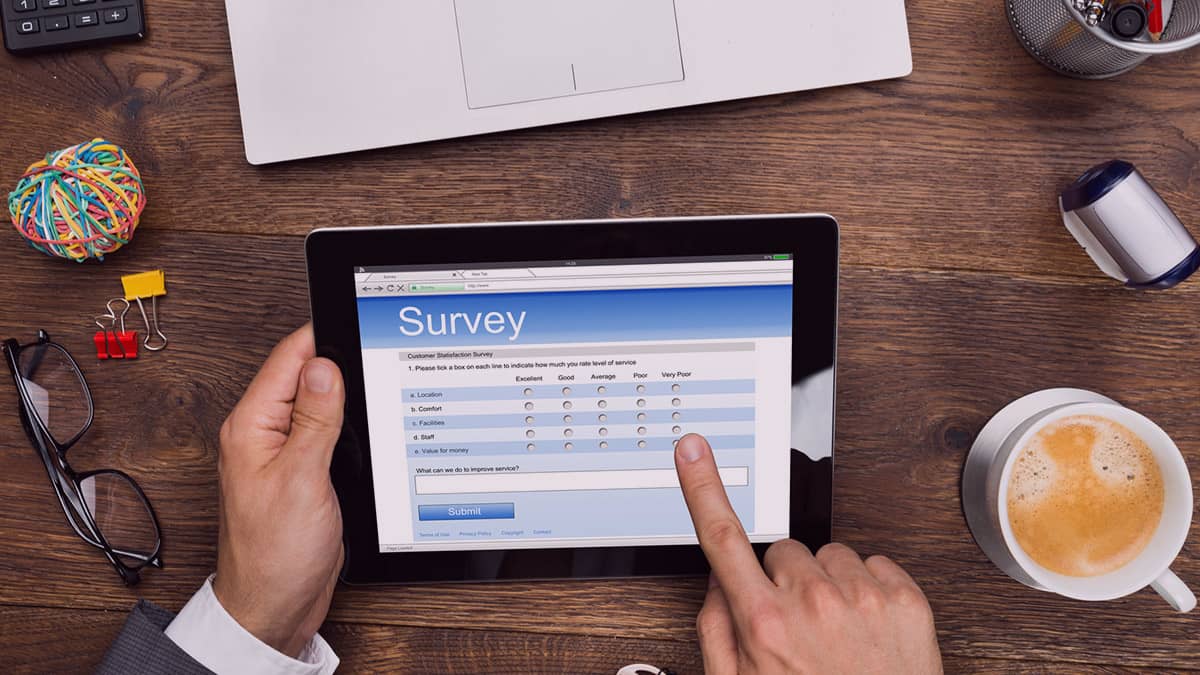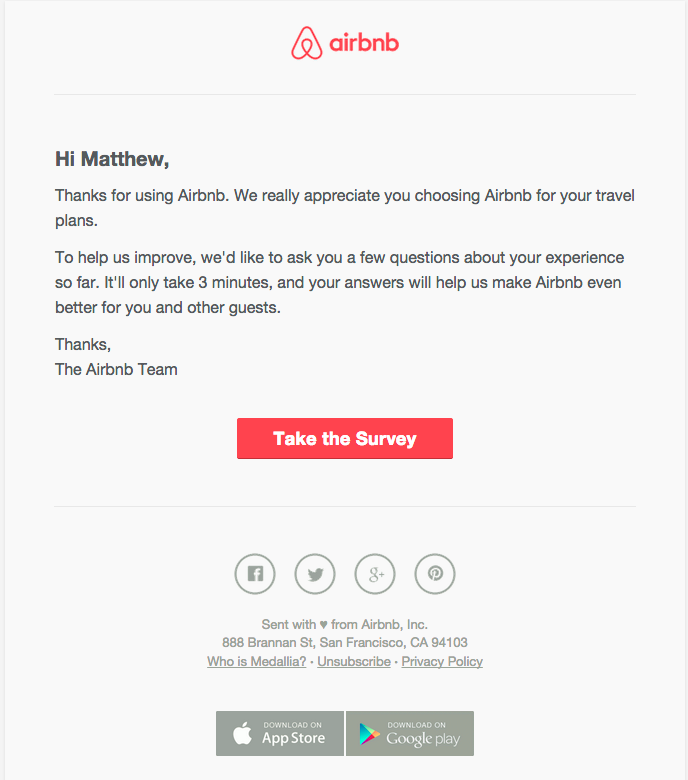
15 Steps to Create an Effective Customer Survey
Every small business and non-profit can benefit from a customer survey at some point, whether it’s to test a new product or to get feedback on how the organization is serving its clients. Customers and donors can help you learn more about your business by answering a few simple questions.
A survey sent via email is one of the most effective methods. So, are you prepared to embark on this journey? Here, we’ll walk you through the steps of designing a thoughtful online survey and writing an invitation email to encourage reader participation.
At the outset, the most important items.
1. Define your goals
To develop effective survey questions, you must first have a clear objective. To what end are you doing this consumer survey? Is there a service you’d like to see our work on? Is it possible to provide feedback on the new website? Write down your survey questions in two or three sentences.
2. Select an online survey tool
It’s easy to survey your customers using one of the numerous available web tools. Using VerticalResponse’s Survey Creator, you can easily design a survey and distribute it to your audience via email.
3. Select a template
The majority of survey generators available online include customizable templates for your surveys. If you don’t have to start from scratch, you’ll save time and be able to tailor the questions to the needs of your business and the respondents to your survey.
4. Add your branding
Don’t forget to brand your survey by including your company’s logo and using the same colors as your branding.
Here are a couple of examples:
5. Create clear questions
The nitty-gritty details have been omitted; you’ve finally reached the meat of the matter. Now is the time to draught up some survey inquiries. Here are some pointers to help you formulate productive and relevant inquiries.
Revisit your goal
It would help if you ensured that every question on your survey contributes to your primary objective.
Ask about one thing at a time
Don’t ask a question that combines too many concepts. In the end, answers are too cryptic to be deciphered.
Don’t try to sway your audience
Try to get to the point by asking open-ended inquiries devoid of bias.
Be specific
Do you often place orders for printer ink at ABC Office Supply? Asking, “Do you routinely order office supplies online?” is an example of a question that lacks specificity. Provides greater depth and precision.
Ask between 5-10 questions
Avoid making the survey too long, or people will give up in the middle.
Select question types
Most survey systems will allow you to choose from several questions. Multiple-choice questions, text boxes, radio buttons, and even a sliding scale can all be created. We recommend limiting each survey to only one or two types of questions. You should avoid asking a wide variety of questions, as this could overwhelm the respondent.
Cover all possible answers
You should probably ensure a good answer somewhere if you use multiple-choice questions.
6. Could you review it?
Proofread and test your survey before sending it out to the masses. Have a colleague check your work if you want to make no mistakes. Just tweak it until it works. Once the customer survey is finished, an invitation email can be sent to get more people to participate.
7. Create an enticing subject line
Make it clear in the subject line of your email that you’re asking for responses to a survey. The subject line should not be too long and contain verbs. Some instances are as follows.
- Help us out here, please. Please fill out this little survey for us!
- Send in your feedback, and you might win a gift card.
- Please give us a hand and take a few minutes to complete our survey.
- How about 2 minutes? Please help us out by providing some comments.
8. Write an effective invitation
You can include a link to the survey in the body of your email to encourage participation. Consider a party invite for a birthday. The invitation is kind and provides important information, such as the party’s intended recipient and duration. An invitation to take part in a survey is comparable to this. The sample email below will guide the creation of your survey invitation.
Warm greeting
This survey expresses appreciation to the respondent personally for their service. Use a method similar to what was used. It’s important to set a positive tone in the first paragraph of an email, so try starting with some kind words.
Who and what is the survey for?
Identify the target audience and explain why they are receiving this survey. Just like the sample did, explain the significance of this survey and its results.
Commitment time
How much time should I allot for this survey? This is crucial background knowledge. Customers are busy; therefore, failing to specify the time commitment will likely go unnoticed. For optimal outcomes, aim for a survey that can be finished in three to five minutes.
Possible incentive
A reward could be included. Include them in a raffle if you’re giving away something. Specify in your email if you intend to do this. If your survey is on the longer side, this is a great feature to have.
A quick close
Conclude your email by thanking the customer and include your signature if you’ve followed the letter format shown above.
9. Create a call to action
A clear call to action is essential. The receiver can go directly to the survey by clicking the red icon above. Try to make it as painless as possible for everyone involved.
10. Segment your list
Who should you send the survey to? It could be helpful to distribute the survey to all your email contacts. However, you may want to send it to a subset of your lists, such as customers who recently made a purchase or those in a certain geographic region. Your responses will be more useful if you divide your list into categories.
11. Review and send
Check your inbox. Verify the accessibility of all links and read your material carefully for any mistakes. After you’ve finished editing, set a delivery date and time so that your intended recipients will receive it at the right time. Consider sending a follow-up email to individuals who haven’t finished the customer survey after a few days.
12. Collect and review responses
Count up your votes. The next step is to compile all of this information for analysis and use it to guide future business decisions.
13. Avoid Leading Questions
You will get skewed survey results if you ask questions in a way that either consciously or unconsciously influences the customer’s responsibility. When asked, “How pleased are you with this product?” some people might give an exaggeratedly positive answer because of the word “happy.” You won’t obtain open and honest feedback from your customers if you ask questions like these. If the question was rephrased as “Are you satisfied or unhappy with this product?” the consumer may then use a numerical scale to express their level of satisfaction.
14. Make it Mobile-Friendly
Create mobile-ready surveys compatible with any smartphone, device, or browser to reach more customers in today’s mobile-enabled environment. With mobile devices, you may record consumer feedback when the event is still vivid in their minds. Data collected in real-time is 40% more accurate and dependable than data collected just 24 hours later. It is anticipated that the proportion of mobile transactions will increase in the years to come. Enhancing the user experience by making the survey responsive on mobile devices can increase the number of people who fill it out.
15. Keep Surveys Short
Fewer people will fill out your customer survey if it takes too long. The proportion of respondents who give up on lengthy surveys is higher, and the prevalence of satisficing’ rises with survey length. This occurs when people fill out surveys fast by selecting answers without giving much thought to them. Furthermore, studies suggest that the more questions there are, the fewer time shoppers spend on each one. When comparing surveys with fewer than 30 items and those with more than 30, the time spent per question is practically halved for the latter. Read this earlier post to learn more about the circumstances in which in-depth surveys are productive.
Conclusion
In the battle for your brand to earn the hearts and loyalties of its customers, customer satisfaction surveys are a powerful and valuable tool. You can enhance your product, service, and overall client experience by using the feedback they provide to you, which will ultimately result in increased income and a more devoted customer base.
Get more tips and tactics by subscribing to the weekly VerticalResponse email newsletter.
© 2015 – 2018, Contributing Author. All rights reserved.






